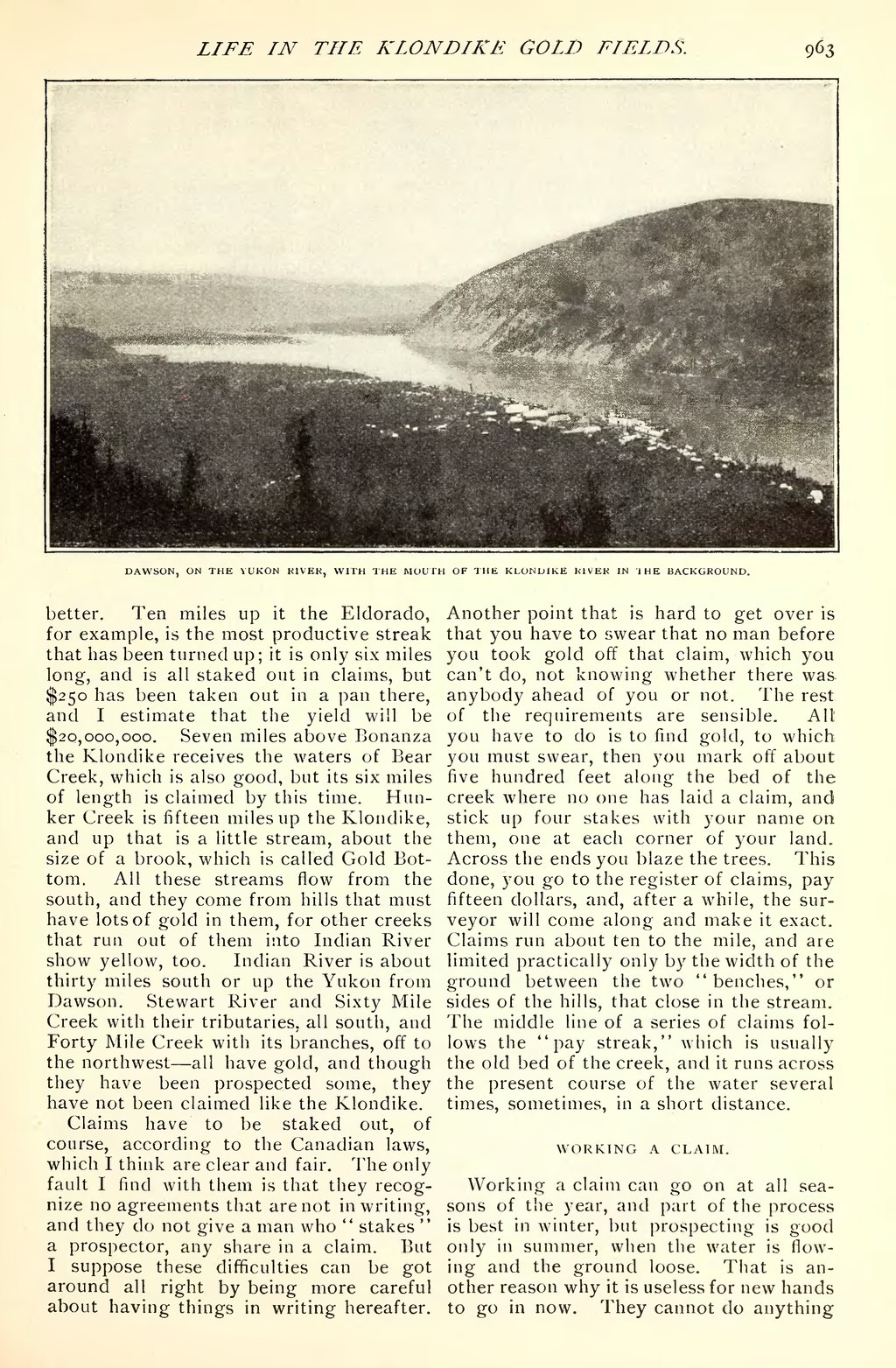
DAWSON, ON THE YUKON RIVER, WITH THE MOUTH OF THE KLONDIKE RIVER IN THE BACKGROUND.
better. Ten miles up it the Eldorado, for example, is the most productive streak that has been turned up; it is only six miles long, and is all staked out in claims, but $250 has been taken out in a pan there, and I estimate that the yield will be $20,000,000. Seven miles above Bonanza the Klondike receives the waters of Bear Creek, which is also good, but its six miles of length is claimed by this time. Hunker Creek is fifteen miles up the Klondike, and up that is a little stream, about the size of a brook, which is called Gold Bottom. All these streams flow from the south, and they come from hills that must have lots of gold in them, for other creeks that run out of them into Indian River show yellow, too. Indian River is about thirty miles south or up the Yukon from Dawson. Stewart River and Sixty Mile Creek with their tributaries, all south, and Forty Mile Creek with its branches, off to the northwest—all have gold, and though they have been prospected some, they have not been claimed like the Klondike.
Claims have to be staked out, of course, according to the Canadian laws, which I think are clear and fair. The only fault I find with them is that they recognize no agreements that are not in writing, and they do not give a man who "stakes" a prospector, any share in a claim. But I suppose these difficulties can be got around all right by being more careful about having things in writing hereafter. Another point that is hard to get over is that you have to swear that no man before you took gold off that claim, which you can't do, not knowing whether there was anybody ahead of you or not. The rest of the requirements are sensible. All you have to do is to find gold, to which you must swear, then you mark off about five hundred feet along the bed of the creek where no one has laid a claim, and stick up four stakes with your name on them, one at each corner of your land. Across the ends you blaze the trees. This done, you go to the register of claims, pay fifteen dollars, and, after a while, the surveyor will come along and make it exact. Claims run about ten to the mile, and are limited practically only by the width of the ground between the two "benches," or sides of the hills, that close in the stream. The middle line of a series of claims follows the "pay streak," which is usually the old bed of the creek, and it runs across the present course of the water several times, sometimes, in a short distance.
WORKING A CLAIM.
Working a claim can go on at all seasons of the year, and part of the process is best in winter, but prospecting is good only in summer, when the water is flowing and the ground loose. That is another reason why it is useless for new hands to go in now. They cannot do anything
